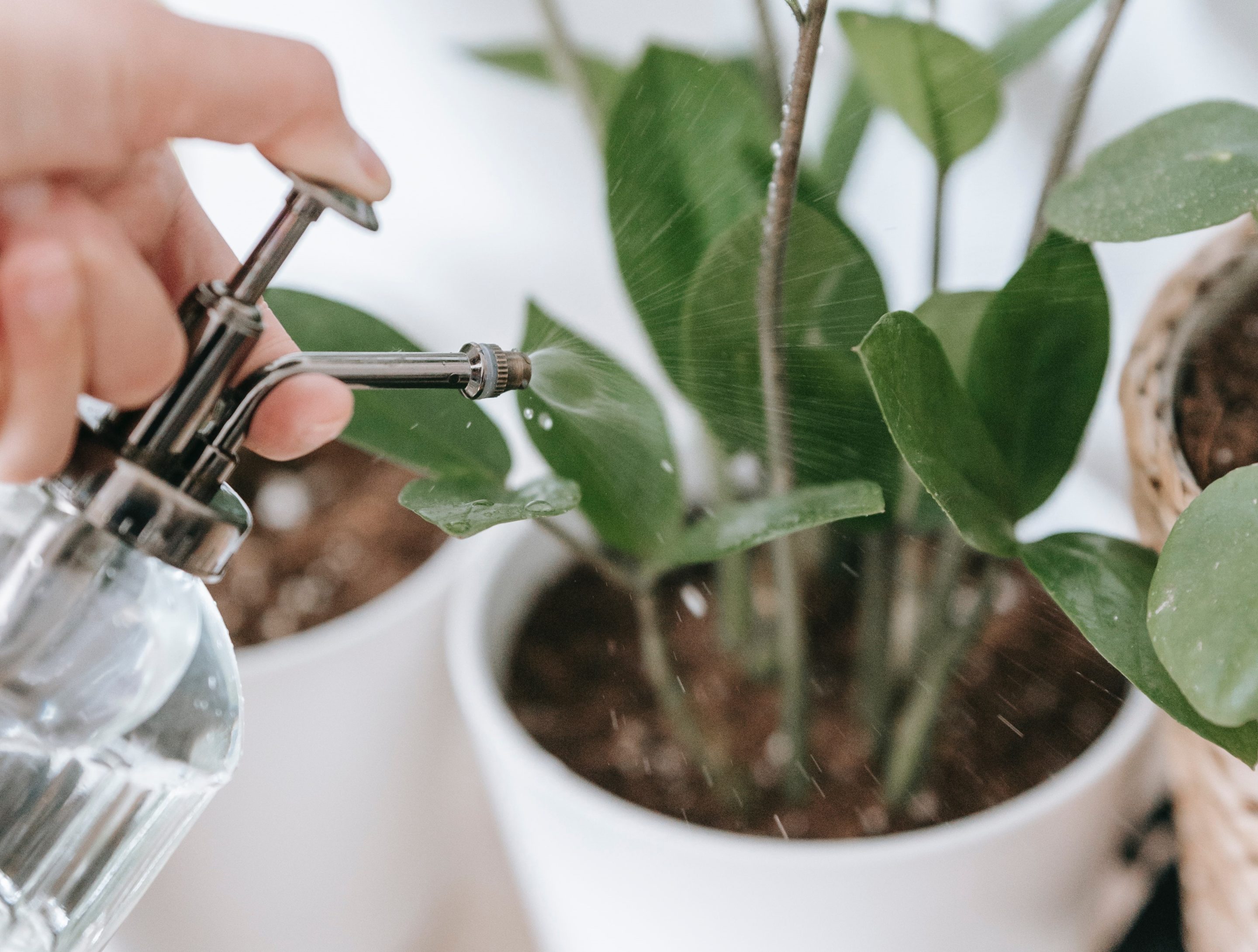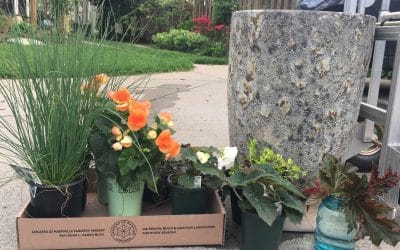—————
Your favorite houseplants bring beauty and life to your indoor “landscape.” Like all living things, though, they are subject to a variety of problems, including being home and host to other living things that can cause damage and weaken the plants.
Being indoors, there are no natural predators – no birds, ladybugs and other beneficial insects — to keep these unwelcome visitors in check, so if they ride in on one houseplant, they can spread rapidly to others in your home. Quick action on your part can keep plants healthy.
Here are five common houseplant pests, and how to control them:
Aphids
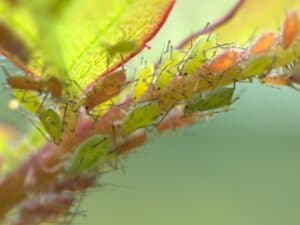 What to look for: You may find these tiny, sometimes wingless insects on the undersides of leaves, stems or flower buds. They survive (and cause damage) by sucking the plant’s juices. Your first hint of an infestation may be the appearance of a black substance on the lower leaves; this is sooty mold, which grows on the sticky substance excreted by insects feeding on your plants.
What to look for: You may find these tiny, sometimes wingless insects on the undersides of leaves, stems or flower buds. They survive (and cause damage) by sucking the plant’s juices. Your first hint of an infestation may be the appearance of a black substance on the lower leaves; this is sooty mold, which grows on the sticky substance excreted by insects feeding on your plants.
Control measures: Aphids can often be washed away with a spray of water. Insecticidal soap or a spray of horticultural oil such as neem oil – a natural pesticide derived from seeds of the tropical, evergreen neem tree that originated in India — will take care of heavy infestations. An application of neem oil (following label directions) kills eggs, larvae and adult aphids. You can find Bonide neem oil spray in the Garden Center at Gardens of Babylon.
Fungus gnats
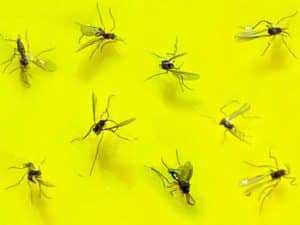 What to look for: Adult gnats are tiny, dark-colored insects that fly around the plant. The adult insects are mostly a nuisance, but the larvae feed on the crown and roots of plants.
What to look for: Adult gnats are tiny, dark-colored insects that fly around the plant. The adult insects are mostly a nuisance, but the larvae feed on the crown and roots of plants.
Control measures: Fungus gnats need constant moisture, so the best control is to avoid overwatering indoor plants. Some houseplant experts recommend capturing adult gnats by using small sticky traps. Safer brand Houseplant Sticky Stakes & Strips are available in the Gardens of Babylon Garden Center. For DIYers, a piece of yellow cardboard coated with petroleum jelly may be an effective trap. Insecticide sprays also work.
Mealybugs
What to look for: These show up on houseplants as white or light, cottony spots gathered at leaf joints or stem nodes, or sometimes on plant roots. Like aphids, mealybugs cause plant damage by feeding on the plant’s juices.
Control measures: Mealybugs have a coating that protects them from sprays, so removing them by hand may be the best option. Because they’re white and fluffy, they’re easy to see, so use a cotton swab dipped in rubbing alcohol to wipe them away, or tweezers to pluck them from leaves and stems.
Scale insects
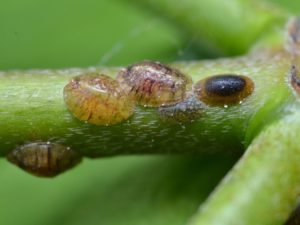 What to look for: If unusual looking, flattened discs or bumps appear to be stuck to the stems or undersides of leaves, suspect a scale infestation. These little insects can also cause big damage by piercing the plant and feeding on its juices. Leaves and stems playing host to scale insects may turn yellow.
What to look for: If unusual looking, flattened discs or bumps appear to be stuck to the stems or undersides of leaves, suspect a scale infestation. These little insects can also cause big damage by piercing the plant and feeding on its juices. Leaves and stems playing host to scale insects may turn yellow.
Control measures: Scale insects have a protective shell that keeps sprays from being effective, but washing the plant with soapy water may eliminate the problem. You can also dip a cotton swab in rubbing alcohol, swipe it over the insects and carefully remove them from the stems. If it’s an early infestation, you may only need to prune the stems and dispose of them. Be sure to watch for reoccurrence, and get rid of the insects as soon as you see them.
Spider mites
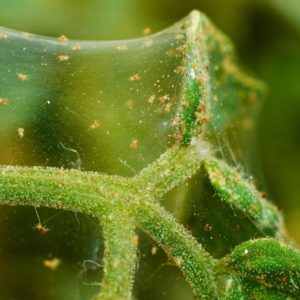 What to look for: These are tiny, tiny creatures whose damage you may begin to notice before you see the actual pests. If you see little yellow pinpricks on the foliage, limp, dry leaves or – and this is the giveaway – faint traces of webbing on leaves and stems, suspect spider mites.
What to look for: These are tiny, tiny creatures whose damage you may begin to notice before you see the actual pests. If you see little yellow pinpricks on the foliage, limp, dry leaves or – and this is the giveaway – faint traces of webbing on leaves and stems, suspect spider mites.
Control measures: Spider mites spread fairly rapidly, so the sooner you can get them under control, the better. Cut off any affected portion of the plant and dispose of it in a sealed bag, the treat the plant with horticultural spray; neem oil is a good choice that’s also a natural miticide. Repeat the spray treatment a couple of times after a few days to get rid of new mites that might have hatched since the first treatment.
By the way, spider mites are not true insects, but are more closely related to ticks and spiders. They thrive in the dry, warm air that’s typical in households during winter, so it helps to mist plants regularly to prevent problems.
Visit the Gardens of Babylon Garden Center to find horticultural oil, sticky traps and other products that help keep pests away from your houseplants.


